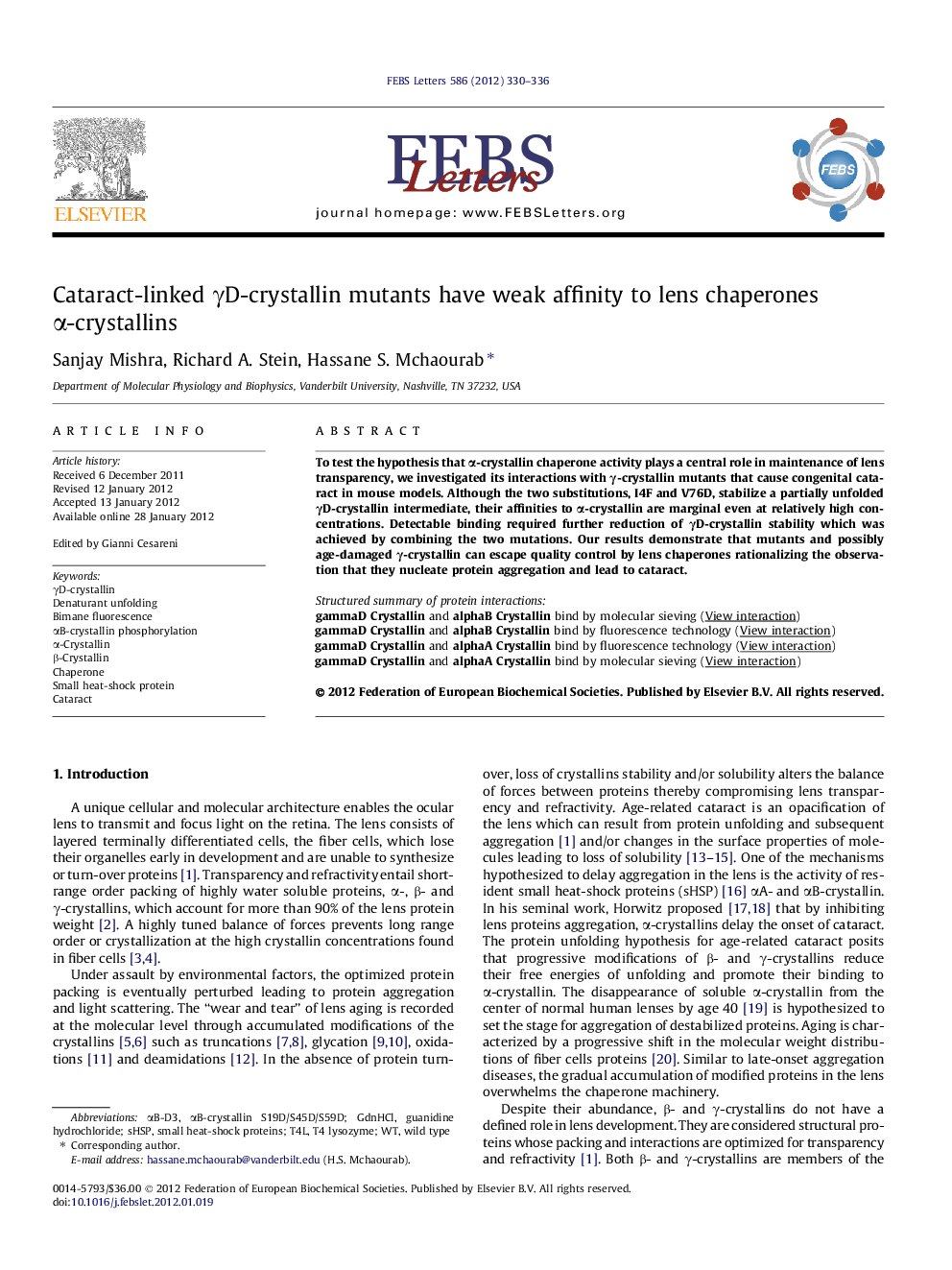| Article ID | Journal | Published Year | Pages | File Type |
|---|---|---|---|---|
| 2048315 | FEBS Letters | 2012 | 7 Pages |
To test the hypothesis that α-crystallin chaperone activity plays a central role in maintenance of lens transparency, we investigated its interactions with γ-crystallin mutants that cause congenital cataract in mouse models. Although the two substitutions, I4F and V76D, stabilize a partially unfolded γD-crystallin intermediate, their affinities to α-crystallin are marginal even at relatively high concentrations. Detectable binding required further reduction of γD-crystallin stability which was achieved by combining the two mutations. Our results demonstrate that mutants and possibly age-damaged γ-crystallin can escape quality control by lens chaperones rationalizing the observation that they nucleate protein aggregation and lead to cataract.Structured summary of protein interactionsgammaD Crystallin and alphaB Crystallinbind by molecular sieving (View interaction)gammaD Crystallin and alphaB Crystallinbind by fluorescence technology (View interaction)gammaD Crystallin and alphaA Crystallinbind by fluorescence technology (View interaction)gammaD Crystallin and alphaA Crystallinbind by molecular sieving (View interaction)
► How can destabilizing mutations of lens γ-crystallin cause cataract? ► Cataract-causing mutations stabilize an unfolding intermediate of γD-crystallin. ► Cataract-causing mutants of γD-crystallin are not efficiently bound by α-crystallin. ► Cataract-causing γD-crystallins escape quality control by α-crystallin.
